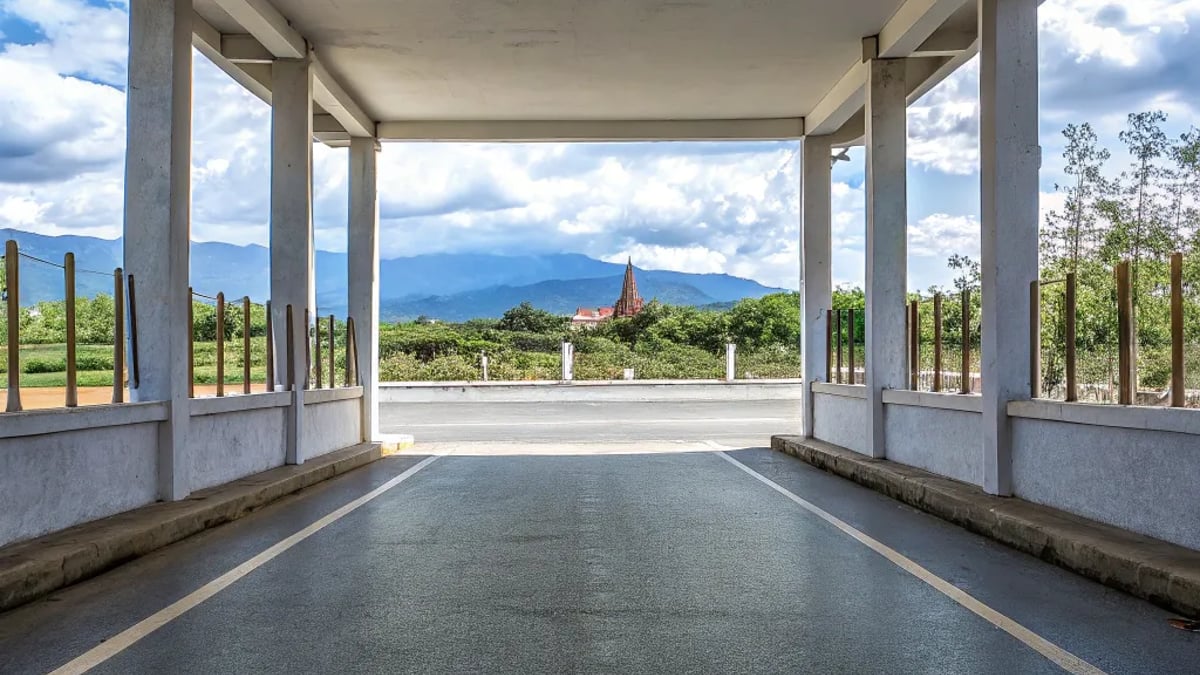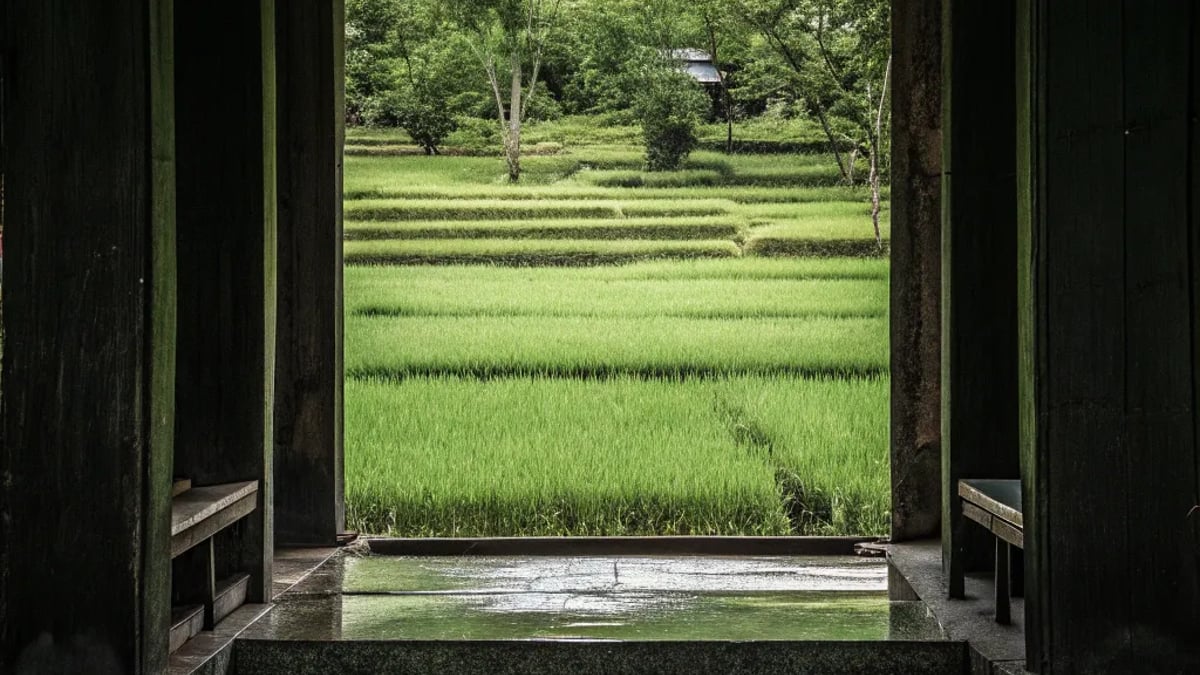
There's something magical about waking up to the distant chime of temple bells while sipping locally grown coffee on your balcony. The morning air carries whispers of ancient traditions blending with the tap-tap of keyboards as fellow nomads begin their workday. This is Chiang Mai – not just a destination, but a lifestyle that thousands of digital wanderers have embraced as their temporary home.
Why Chiang Mai Became the Digital Nomad Capital of Southeast Asia
The rise of Chiang Mai as a digital nomad hub didn't happen by accident. When I first arrived in 2018, the city was already buzzing with location-independent professionals from across the globe. What started as a trickle of adventurous freelancers in the early 2010s has transformed into a robust community.
Several factors have contributed to this northern Thai city's popularity among remote workers. The cost of living sits at the sweet spot – affordable enough to save money while offering comforts that make daily life pleasant. A modern studio apartment might run you $300-400 monthly, while a hearty pad thai from a local street vendor costs under $2. This economic advantage allows nomads to stretch their dollars, euros, or pounds significantly further than in Western countries.
"I was spending nearly $2,800 monthly just on rent and basic expenses in San Francisco," shares Marcus, a software developer I met at a coworking space near Nimman. "Here, my entire monthly budget is about $1,200, including weekend trips to nearby attractions. The math just makes sense."

But Chiang Mai offers more than just savings. The infrastructure specifically caters to remote workers in ways other budget-friendly destinations don't always manage. High-speed internet is widely available and reliable – a non-negotiable requirement for digital professionals. The city boasts dozens of coworking spaces, from sleek modern facilities like CAMP at Maya Mall to charming converted teak houses with garden workspaces.
The Community Factor
Perhaps the most compelling aspect of Chiang Mai's nomad scene is the community itself. Unlike the transient backpacker crowds that move quickly through Southeast Asian destinations, digital nomads typically stay for months, creating a more stable social environment.
Weekly meetups, skill-sharing workshops, and entrepreneurial events happen regularly. The Nomad Coffee Club hosts gatherings every Thursday evening, rotating between different cafés throughout the city. These aren't just social events – they're networking opportunities, knowledge exchanges, and for many, the human connection that prevents remote work isolation.
Lisa, a content creator from Germany who's been based in Chiang Mai for over a year, explains: "Back home, I felt like the odd one out with my lifestyle. Here, nobody questions why I work strange hours or take Tuesday afternoons off. Everyone gets it. That sense of belonging is worth more than any cost savings."
Embracing Slow Travel in a Fast-Paced Digital World

The concept of slow travel stands in direct opposition to checkbox tourism – that frantic pace of seeing all the "must-visit" attractions in the shortest possible time. Instead, slow travel emphasizes immersion, connection, and a deeper understanding of place.
For digital nomads in Chiang Mai, this approach comes naturally. When you're not rushing through a two-week vacation, you can experience the city's rhythms in a more authentic way. You'll find yourself becoming a regular at the local coffee shop, where the barista eventually remembers your order. You might join a Thai language class that meets weekly, gradually building vocabulary that enhances your daily interactions.
This unhurried approach allows for discoveries that typical tourists miss. The tiny soup stall that only locals seem to know about. The hidden temple garden where monks practice English with visitors on Thursday afternoons. The vintage clothing market that pops up only on the last Sunday of the month.
Seasonal Considerations
One aspect of slow travel in Chiang Mai that deserves special mention is the seasonal nature of life here. The city experiences three distinct seasons, each offering different experiences and challenges.
The cool season (November to February) brings pleasant temperatures and clear skies, making it the most popular time for digital nomads. The city fills with visitors during this period, and accommodation prices often rise accordingly.

Hot season (March to May) sees temperatures regularly climbing above 100°F (38°C), sending many nomads to cooler destinations or toward Chiang Mai's air-conditioned malls and coworking spaces.
The rainy season (June to October) transforms the landscape, with lush greenery replacing the dry browns of hot season. While afternoon downpours are common, they're typically brief, and the reduced number of tourists means better deals on accommodation.
Most challenging is the burning season (typically February to April), when farmers in the region practice slash-and-burn agriculture. As noted by Lietco.com, "Schools were cancelled at times due to the smoke, and many locals wear face masks when they have to go outside, especially to commute." Many long-term nomads plan their travels around this period, temporarily relocating to other hubs like Bali or Ho Chi Minh City.
A Day in the Life: The Chiang Mai Nomad Routine
What does daily life actually look like for digital nomads embracing slow travel in Chiang Mai? While everyone creates their own rhythm, certain patterns emerge among the community.
Mornings often start early, partly to sync with Western business hours and partly to enjoy the cooler part of the day. A typical day might begin with a quick breakfast at home or at one of the many cafés that open their doors by 7 AM.
Work sessions typically happen in 3-4 hour blocks, either at a favorite coworking space, a café with reliable WiFi, or from home. Popular coworking options include:
- Hub53: A community-focused space with a garden area
- CAMP at Maya: Open 24/7 with free use when purchasing food or drinks
- Punspace: One of the original nomad-focused spaces with multiple locations
Lunch might be a quick bowl of khao soi (northern Thai curry noodle soup) from a nearby street vendor or food court. As the afternoon heat builds, many nomads continue working in air-conditioned comfort until around 4 or 5 PM.
Evenings in the nomad community are social affairs. On any given night, you might find yourself at a skill-sharing workshop, a language exchange meetup, or simply sharing beers with fellow nomads at a riverside bar. The night markets – particularly the Sunday Walking Street – are popular gathering spots where work takes a backseat to exploration and enjoyment.
Weekends often involve day trips to nearby attractions like the Sticky Waterfalls, Doi Suthep temple, or the Elephant Nature Park. Some nomads use the time to explore further afield, taking overnight trips to Pai or Chiang Rai.
Where to Stay: Finding Your Chiang Mai Home Base
Accommodation options in Chiang Mai span the full spectrum, from budget guesthouses to luxury condos. Most digital nomads opt for monthly rentals, which offer significant savings over daily or weekly rates.
The most popular neighborhoods for nomads include:
Nimman (Nimmanhaemin)
This trendy area northwest of the Old City has become the de facto digital nomad headquarters. Filled with modern condos, coworking spaces, and countless cafés, Nimman offers convenience at a higher price point than other neighborhoods.
"Nimman feels like it was designed for digital nomads," says James, a web developer from Australia. "Everything I need is within walking distance – my gym, coworking space, great coffee, and amazing food options. I pay more to live here, but the time I save not commuting makes it worthwhile."
Monthly rentals in modern condos like One Plus or Dcondo typically start around $400-500 for a studio apartment.
Old City
The historic heart of Chiang Mai, surrounded by ancient walls and a moat, offers a more traditional Thai experience. Accommodation here tends toward guesthouses and renovated shophouses rather than modern condos.
The Old City appeals to nomads seeking cultural immersion and a more authentic experience. While WiFi can be less reliable in some older buildings, the charm and central location compensate for any minor inconveniences.
Monthly rentals here typically range from $200-350 for basic accommodations to $400+ for more modern options.
Santitham
Just north of the Old City, Santitham offers a local experience with increasing nomad-friendly infrastructure. This up-and-coming area provides a nice balance of affordability and convenience.
"I pay about $280 for my one-bedroom apartment in Santitham," shares Emma, a digital marketer from the UK. "It's a 10-minute scooter ride to the coworking spaces in Nimman, but I save nearly $200 a month compared to living there. Plus, the street food here is amazing and super cheap."
How Do I Get Started as a Digital Nomad in Chiang Mai?
If you're contemplating joining the digital nomad community in Chiang Mai, the process is surprisingly straightforward. Here's a simplified roadmap:
- Visa considerations: Most nomads enter on tourist visas, which typically allow stays of 30-60 days with extension possibilities. The Thailand Elite visa is popular among long-term nomads, though it comes with a significant investment.
- Finding accommodation: For your first visit, consider booking a guesthouse or Airbnb for the first week while you explore neighborhoods. Facebook groups like "Chiang Mai Digital Nomads" and "Chiang Mai Accommodations" regularly post rental opportunities.
- Establishing community connections: Attend meetups (easily found on Facebook or Meetup.com) within your first few days to start building your social network.
- Setting up essentials: Purchase a local SIM card (AIS or dtac offer good coverage) for backup internet and local calls. Open a local bank account if staying long-term.
- Transportation: Consider renting a scooter (approximately $100 monthly) or familiarize yourself with the songthaew system (red truck taxis) and ride-hailing apps like Grab.
Is Chiang Mai Right for Every Digital Nomad?
Despite its popularity, Chiang Mai isn't necessarily the ideal destination for every remote worker. As one Reddit user noted about their experience with a digital nomad program, "The truth is, there's more to being a digital nomad for me than living in places that are cheap."
Chiang Mai works best for those who:
- Appreciate Asian culture and are open to cultural differences
- Enjoy a balance of modern conveniences and traditional experiences
- Thrive in community settings with other international remote workers
- Can adapt to seasonal challenges like burning season
- Prefer a relaxed pace rather than big-city energy
Those seeking pristine beaches, sophisticated nightlife, or European amenities might find other nomad hubs more suitable. As documented on the Nomad Numbers blog, "We've enjoyed following you guys and your travels as we too are nomads slow traveling on a budget. The info on Chiangmai Mai will certainly come in handy," highlighting how individual preferences shape each nomad's ideal destination.
The Future of Slow Travel in Chiang Mai
The digital nomad landscape is constantly evolving, and Chiang Mai continues to adapt. Recent years have seen the city respond to the growing nomad population with more dedicated infrastructure – from nomad-focused housing developments to visa services that cater specifically to remote workers.
The COVID-19 pandemic temporarily disrupted the nomad ecosystem, but as travel restrictions have eased, the community has begun to rebuild. In fact, some observers note that the post-pandemic nomad population seems more committed to slow travel principles, with longer stays and deeper community engagement.
Local businesses have also evolved to better serve this market. Thai language schools now offer flexible course schedules designed around working hours. Fitness centers provide monthly memberships without long-term commitments. Even traditional markets have adapted, with vendors learning English phrases and accepting mobile payments.
As captured in a video by Slow Travel Nomads, "Exploring Chiang Mai & Why Digital Nomad Life = BEST LIFE" reflects the continuing appeal of this northern Thai city for those seeking a balanced approach to work and travel.
Finding Your Rhythm in the Rose of the North
Chiang Mai's nickname – the Rose of the North – feels particularly apt when you experience the city through the lens of slow travel. Like getting to know a complex flower, the city reveals its layers gradually, rewarding those who take time to look closely.
For digital nomads, this northern Thai city offers a rare combination of affordability, community, and infrastructure that supports both productivity and exploration. The ability to work effectively while immersing yourself in a rich cultural landscape creates a lifestyle that many find difficult to leave behind.
Whether you come for a month or end up staying for years (as many do), embracing the slow travel mindset in Chiang Mai transforms what could be just another destination into something more meaningful – a place that might just feel like home, even when home is everywhere and nowhere at once.
As I close my laptop at a café overlooking the Ping River, watching longtail boats drift by while monks in saffron robes stroll along the opposite bank, I'm reminded of why so many of us choose this path. In the balance between work and wonder, Chiang Mai somehow helps us find our center – and perhaps that's the greatest luxury a digital nomad could ask for.
Tags

About Clara Vanderbeek the Author
Clara Vanderbeek is a consummate wanderer and slow-travel aficionado, dedicated to crafting thoughtful travel guides that encourage travelers to savor every moment and delve deeper into the heart of each destination. Her expertise lies in uncovering hidden gems and local cultures, fostering genuine connections with the places she explores.
Recommended Articles
10 Bucket List Destinations to Consider This Year
Explore ten captivating bucket list destinations including Maldives, Japan, Italy, and more. Perfect travel ideas for your next adventure this year!
The Most Scenic Train Tours for Seniors in 2025
Discover the best scenic train tours for seniors in 2025, offering comfort, stunning views, and unforgettable experiences across the globe.
10 Life-Changing Trips to Add to Your Bucket List Now
Explore these ten life-changing trips you must add to your bucket list now for unforgettable experiences and epic travel ideas.
5 Cities Seniors Are Traveling to This Year
Explore the top five cities seniors are traveling to this year. Discover cultural gems, scenic wonders, and senior-friendly experiences.
How to Tour Italy by Train Without Overspending
Explore Italy by train without overspending. This guide shares tips for budget travel, key routes, and money-saving strategies for an unforgettable journey.




